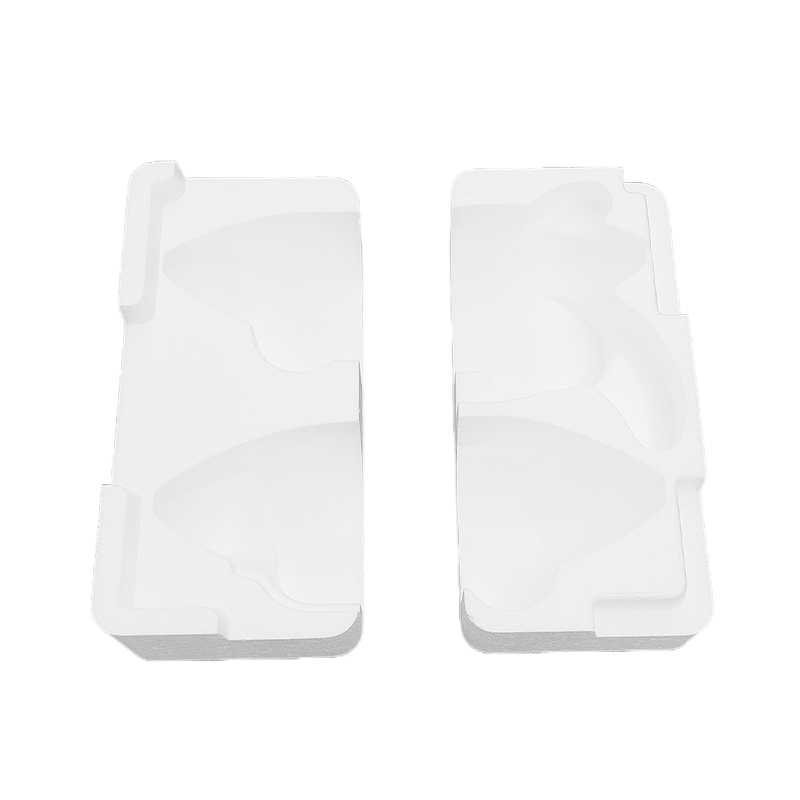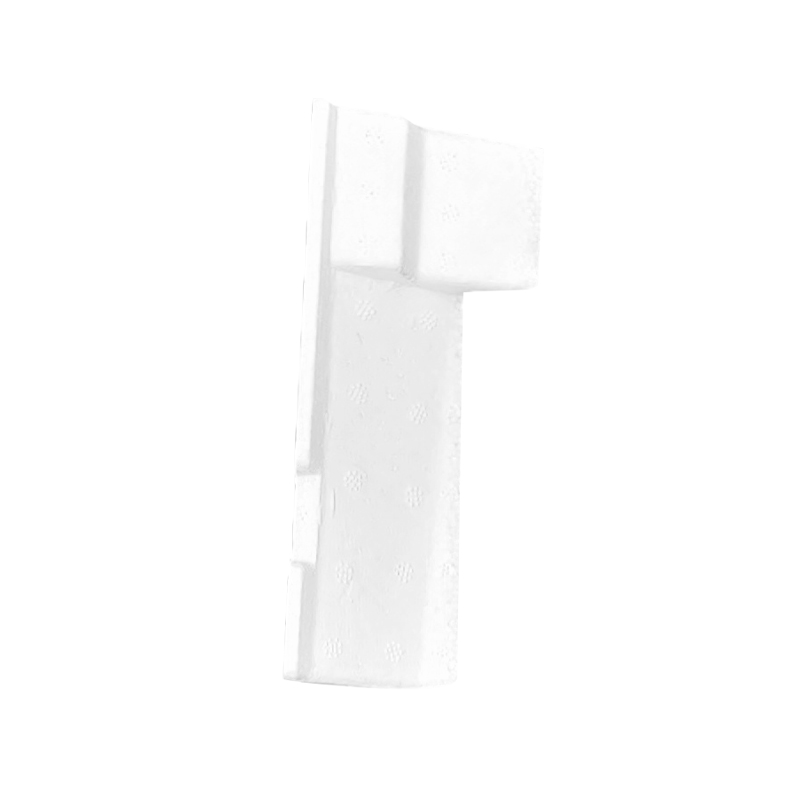How does motors EPS packaging achieve "zero damage" protection for bearings and windings within motors?
Release Time : 2025-10-16
With the rapid development of electrification and intelligent vehicles, electric power steering (EPS) systems have become a core component of modern vehicle steering systems. EPS systems integrate precision motors, reduction gears, torque sensors, and electronic control units. The steering motor, its core power source, contains sensitive components such as high-precision bearings, copper windings, magnets, and circuit boards. These components are extremely sensitive to vibration, shock, and compression. Even the slightest external impact can cause bearing misalignment, winding deformation, enameled wire breakage, or insulation damage, thereby impacting motor performance and even causing system failure. EPS packaging for motors must achieve "zero damage" protection for these delicate internal components. Hyundai Motor EPS packaging utilizes precise structural design, high-performance cushioning materials, an intelligent positioning system, and a comprehensive protection concept to create a sturdy "mobile safety cabin."
1. Highly elastic cushioning materials: Absorb impact energy and reduce transmitted stress
The first line of defense for "zero damage" is the cushioning material. The EPS packaging lining typically utilizes high-density, highly resilient foam. These materials possess excellent elasticity and compression resistance, enabling them to rapidly deform upon impact, absorbing and dissipating vibration and collision energy, effectively reducing the acceleration and stress transmitted to the EPS motor body. IXPE, in particular, boasts a closed-cell structure, excellent temperature resistance, and resistance to aging. It maintains stable cushioning performance even after multiple transport cycles, ensuring long-term protection and reliability. The material's thickness, density, and hardness are precisely calculated, resulting in a customized design tailored to EPS motors of varying weights and structures, ensuring optimal protection under various transport conditions.
2. Precision Cavity Design: One Cavity for One Part, Eliminating Internal Displacement
The effectiveness of cushioning materials depends not only on the material but also on the structural design. Modern EPS packaging utilizes a customized "one cavity for one part" lining structure. This means that the packaging cavity is precisely molded based on the EPS motor's three-dimensional shape and key stress points using CAD/CAM technology, ensuring a perfectly aligned interior contour. Dedicated slots and support points are incorporated into the motor housing, connectors, gear output shaft, and other components to ensure the product remains secure within the packaging, free of vibration, friction, or hanging. This precise positioning effectively prevents relative movement of internal components due to inertia during transportation, avoids fretting wear caused by repeated micro-motion of bearings, and prevents loosening or deformation of windings due to vibration.
3. Multi-directional Limiting and Support: Comprehensive Protection of Critical Areas
EPS motor bearings are typically located at both ends of the motor, and the windings are concentrated around the stator core. These areas are vulnerable to impact. The packaging design specifically enhances the protection of these critical areas. For example, thickened cushions are placed at both ends of the motor shaft to prevent the shaft head from being deformed under pressure. A ring-shaped support structure is used in the winding area in the middle of the motor to evenly distribute lateral pressure. Independent protective covers or soft insulation layers are used around the output gears to prevent damage to the tooth surfaces caused by bumps. Furthermore, the packaging itself is made of high-strength corrugated cardboard or recyclable engineering plastic boxes, which have excellent pressure and puncture resistance. They can withstand the static loads of stacking and transportation, and prevent external compression that could cause the lining to fail.
4. Anti-static and Environmental Protection: Preventing Invisible Damage
The electronic control unit and windings within the EPS motor are extremely sensitive to static electricity. Ordinary plastic packaging easily generates static electricity during friction, potentially damaging semiconductor components. Therefore, EPS packaging is typically lined with anti-static material to safely conduct static electricity, preventing this "invisible killer." Furthermore, the packaging is moisture- and dust-resistant, preventing moisture intrusion that could degrade winding insulation or corrode metal components, further ensuring product reliability in complex logistics environments.
5. Standardization and Traceability: Ensuring Safety Throughout the Entire Process
Motor EPS packaging supports integration with automated logistics systems, such as automated guided vehicle (AGV) handling and high-bay warehouse storage. The packaging is printed with a unique QR code or RFID tag, recording product model, batch, and transportation route, enabling full traceability. In the event of an anomaly, the problem can be quickly located, improving supply chain management efficiency.
Motor EPS packaging achieves "zero damage" to the bearings and windings within the motor through a multi-dimensional protection system comprised of high-performance cushioning materials, precise cavity design, reinforced key areas, anti-static environmental control, and an intelligent traceability system. It serves not only as a product transport container but also as a "life shield" to safeguard the quality and safety of core automotive components, providing solid support for supply chain security in the era of intelligent driving.
1. Highly elastic cushioning materials: Absorb impact energy and reduce transmitted stress
The first line of defense for "zero damage" is the cushioning material. The EPS packaging lining typically utilizes high-density, highly resilient foam. These materials possess excellent elasticity and compression resistance, enabling them to rapidly deform upon impact, absorbing and dissipating vibration and collision energy, effectively reducing the acceleration and stress transmitted to the EPS motor body. IXPE, in particular, boasts a closed-cell structure, excellent temperature resistance, and resistance to aging. It maintains stable cushioning performance even after multiple transport cycles, ensuring long-term protection and reliability. The material's thickness, density, and hardness are precisely calculated, resulting in a customized design tailored to EPS motors of varying weights and structures, ensuring optimal protection under various transport conditions.
2. Precision Cavity Design: One Cavity for One Part, Eliminating Internal Displacement
The effectiveness of cushioning materials depends not only on the material but also on the structural design. Modern EPS packaging utilizes a customized "one cavity for one part" lining structure. This means that the packaging cavity is precisely molded based on the EPS motor's three-dimensional shape and key stress points using CAD/CAM technology, ensuring a perfectly aligned interior contour. Dedicated slots and support points are incorporated into the motor housing, connectors, gear output shaft, and other components to ensure the product remains secure within the packaging, free of vibration, friction, or hanging. This precise positioning effectively prevents relative movement of internal components due to inertia during transportation, avoids fretting wear caused by repeated micro-motion of bearings, and prevents loosening or deformation of windings due to vibration.
3. Multi-directional Limiting and Support: Comprehensive Protection of Critical Areas
EPS motor bearings are typically located at both ends of the motor, and the windings are concentrated around the stator core. These areas are vulnerable to impact. The packaging design specifically enhances the protection of these critical areas. For example, thickened cushions are placed at both ends of the motor shaft to prevent the shaft head from being deformed under pressure. A ring-shaped support structure is used in the winding area in the middle of the motor to evenly distribute lateral pressure. Independent protective covers or soft insulation layers are used around the output gears to prevent damage to the tooth surfaces caused by bumps. Furthermore, the packaging itself is made of high-strength corrugated cardboard or recyclable engineering plastic boxes, which have excellent pressure and puncture resistance. They can withstand the static loads of stacking and transportation, and prevent external compression that could cause the lining to fail.
4. Anti-static and Environmental Protection: Preventing Invisible Damage
The electronic control unit and windings within the EPS motor are extremely sensitive to static electricity. Ordinary plastic packaging easily generates static electricity during friction, potentially damaging semiconductor components. Therefore, EPS packaging is typically lined with anti-static material to safely conduct static electricity, preventing this "invisible killer." Furthermore, the packaging is moisture- and dust-resistant, preventing moisture intrusion that could degrade winding insulation or corrode metal components, further ensuring product reliability in complex logistics environments.
5. Standardization and Traceability: Ensuring Safety Throughout the Entire Process
Motor EPS packaging supports integration with automated logistics systems, such as automated guided vehicle (AGV) handling and high-bay warehouse storage. The packaging is printed with a unique QR code or RFID tag, recording product model, batch, and transportation route, enabling full traceability. In the event of an anomaly, the problem can be quickly located, improving supply chain management efficiency.
Motor EPS packaging achieves "zero damage" to the bearings and windings within the motor through a multi-dimensional protection system comprised of high-performance cushioning materials, precise cavity design, reinforced key areas, anti-static environmental control, and an intelligent traceability system. It serves not only as a product transport container but also as a "life shield" to safeguard the quality and safety of core automotive components, providing solid support for supply chain security in the era of intelligent driving.







